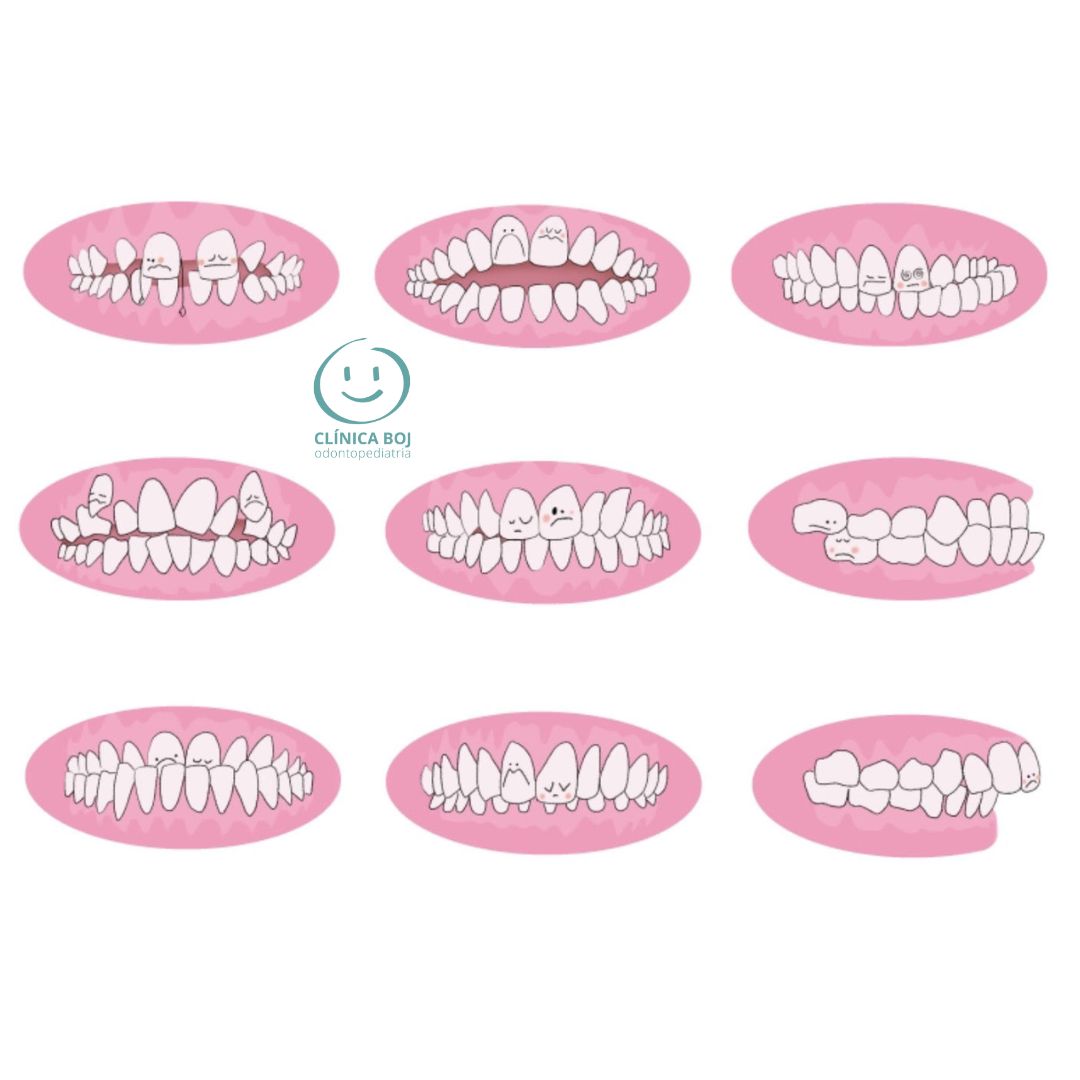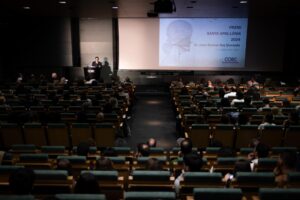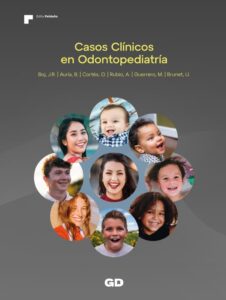What is malocclusion & treatment during childhood
What is the cause of malocclusion?
Malocclusion is an alteration of the growth of both jaws (upper and lower) and a non correct occlusion (relationship) between both. Also, malocclusions facilitate the development of caries and gum diseases.
For example, if teeth alignment is incorrect it may prevent a proper function of the masticatory system. Overmore, this situation may represent an esthetic problem for the patient, as well as, rarely, speech difficulties.
Therefore, jaw malocclusions must be treated and corrected during childhood or adolescence by a paediatric dentist to avoid the inconvenience of difficult and complicated treatments during adulthood. In other words, treatment is not so convenient when growth patterns cannot be altered any longer.
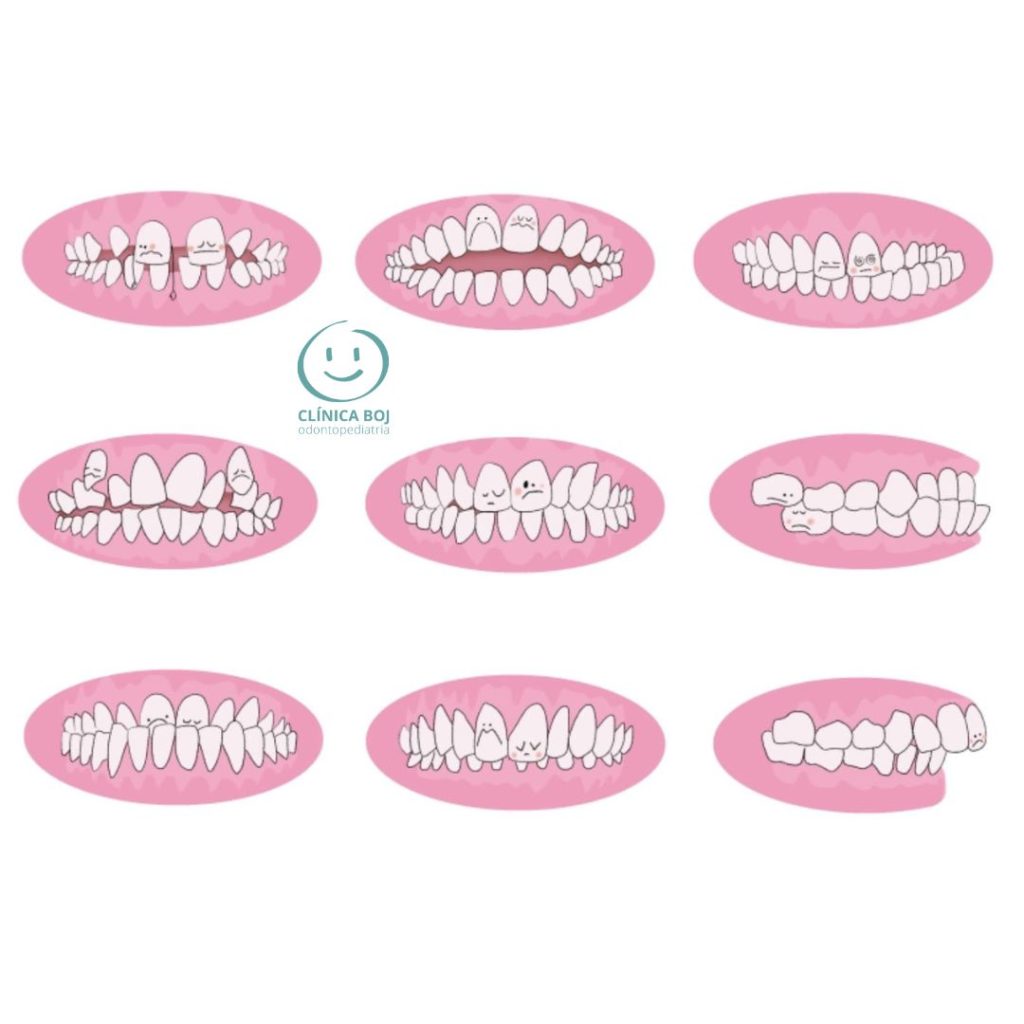
Which is the most frequent cause of bad bite?
Dental malocclusion, also known as bad or improper bite, is frequently caused by several factors:
- On one side, we have
ethiological dfactors,
such as genetic inheritance. In fact, it´s frequent to find an improper bite pattern in certain families (upper jaw with front teeth advanced, lower jaw advanced ahead of lower jaw…). One of these factors may be the lack of space for all teeth (crowded teeth). -
On the other side, acquired factors may influence in the development or worsening of teeth malocclusion. These acquired factors may be: a) digital suction (thumb sucking), b) long lasting use of pacifiers, c) atypical swallowing, d) lingual or lip interposition, e) oral breathing associated to tonsils or adenoids hypertrophia, or, f) hay fever.
- We also have,
local causes or factors
, such as premature loss of temporary teeth. These premature losses may be caused by tooth decay, dental traumatisms, supernumerary teeth or missing teeth (agenesia).
What are the 3 types of malocclusion?
There are three types of improper bites which are not considered normal, except Class 1 in the anterior-posterior malocclusion type listed below:
-
Transversal malocclusion
is an alteration of the width of the jaws or of the inclination of teeth. With this type of alteration we find a posterior crossbite, and it may appear on one side or on both of the jaws. We can see misaligned bites. Sometimes, there is a shift of one or both jaws (upper jaw and lower jaw) to one side. We can also see a midline shift when the midline of upper teeth and lower teeth do not match. -
Vertical malocclusion
exists when the measurement of the degree of overlap between the maxillary incisors and the mandibular incisors is not considered normal. The degree of overlap may be: average, edge to edge, reduced (open bite or underbite) and increased (overbite). -
Anterior-posterior malocclusion
is classified in relation with the sagittal plane which we can imagine with a plate cutting the mouth area into left and right halves. The basis is the assessment of the intermaxillary position of the first permanent molars. We have three different cases: normal (class 1), upper molar advanced (class 2) and lower molar advanced (class 3).
How can malocclusion be treated?
Malocclusions must be treated and corrected for both, functional as well as esthetic reasons. Considering function, both dental and gingival health may be at risk, as well as the temporo mandibular joint or TMJ.
Also, when teeth do not fit together properly, children may find it harder to keep a good oral hygiene, experiencing therefore an additional problem: tooth decay.
Clearly, each case must be evaluated individually for appropriate treatment. Therefore, early diagnosis is the key to prevent both, esthetic and functional problems.
To end, treatments are normally performed with appliances at the appropriate time decided by the pediatric dentist, after an orthodontic study.
Malocclusion before and after
In this post, we attach pictures of a patient treated in our paediatric dentistry and orthodontics clinic. Also, please look at the difference of the bite of this child before and after the interceptive orthodontic treatment.
Bite before and after the orthodontic treatment:
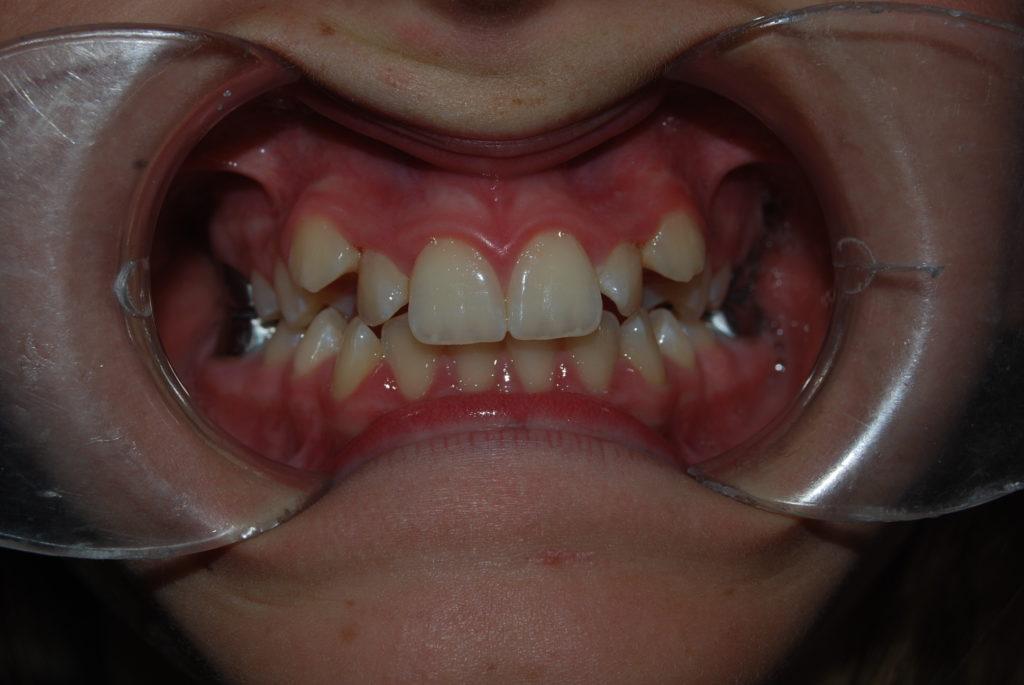
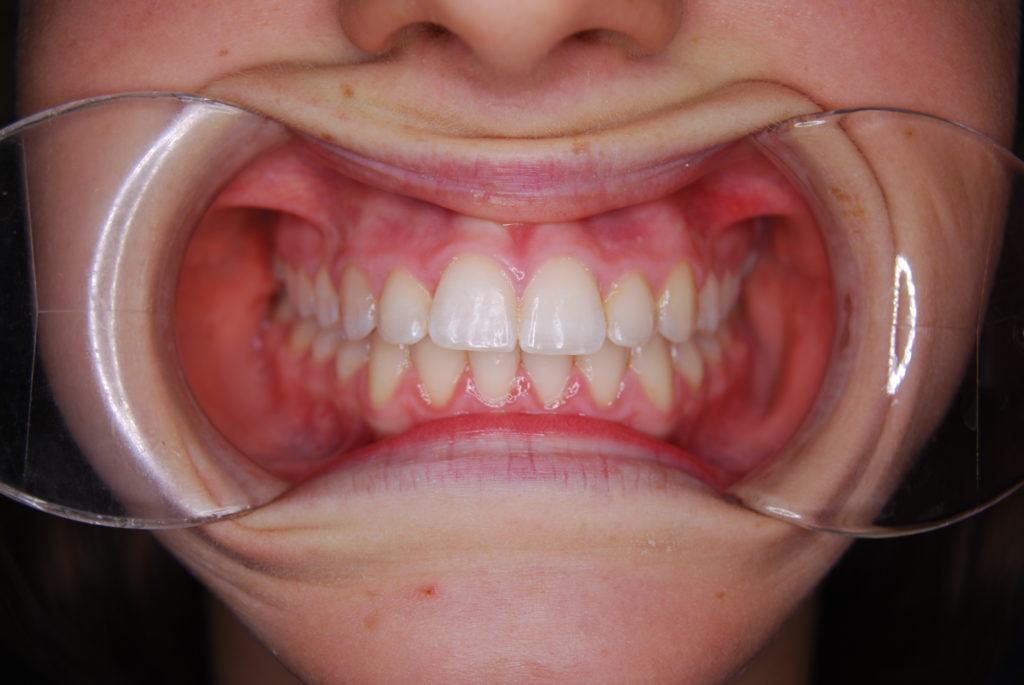
References:

